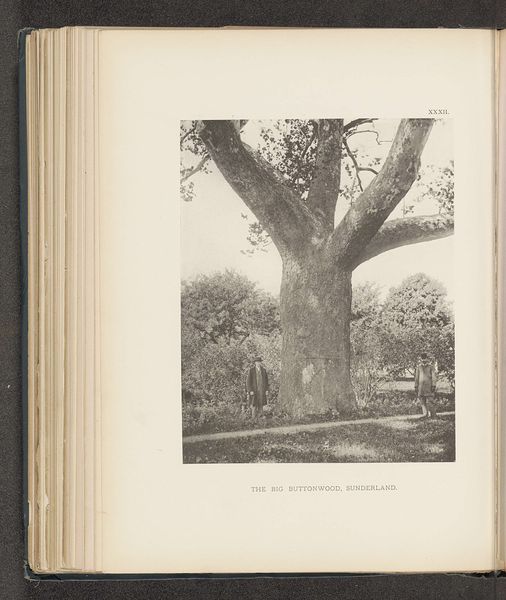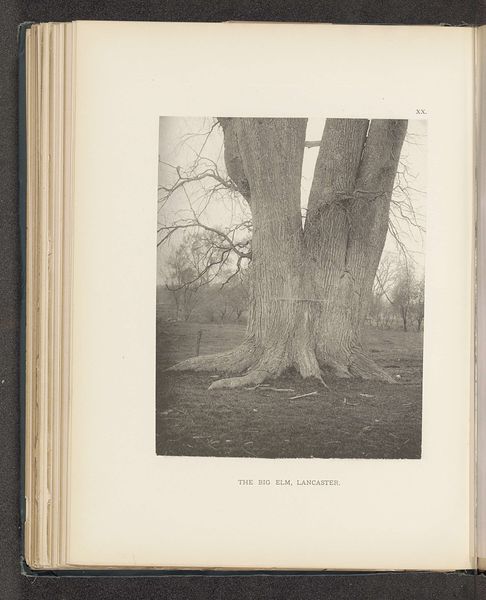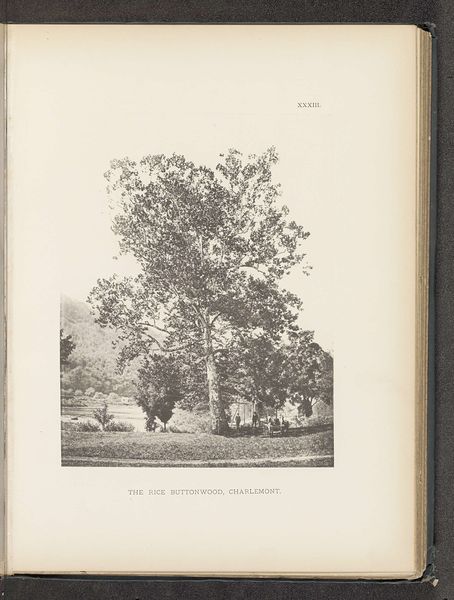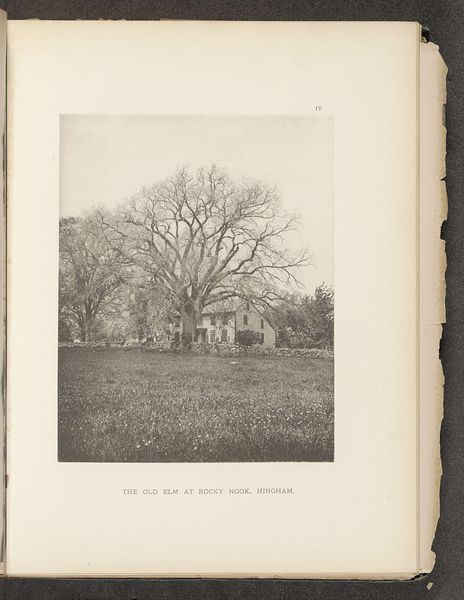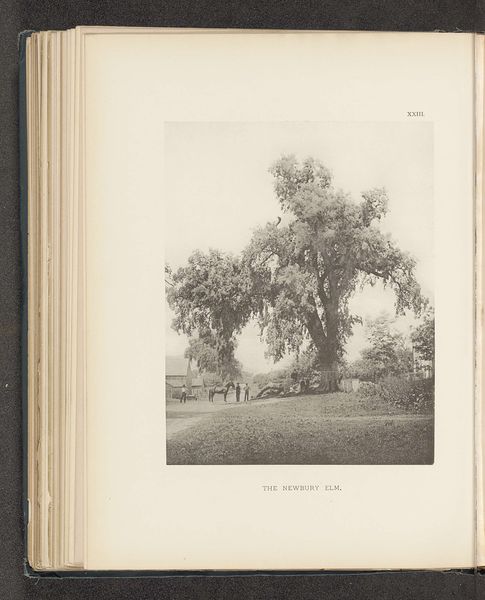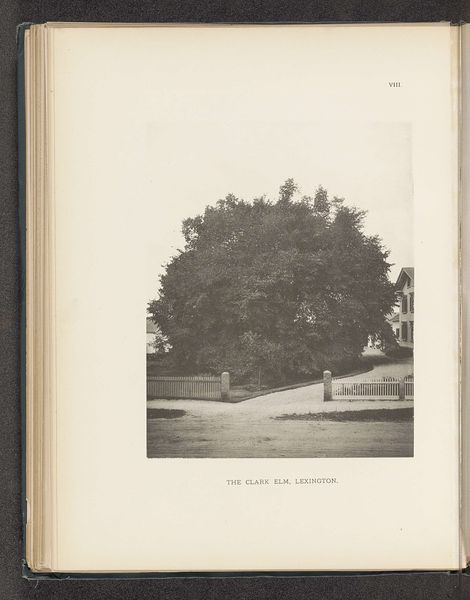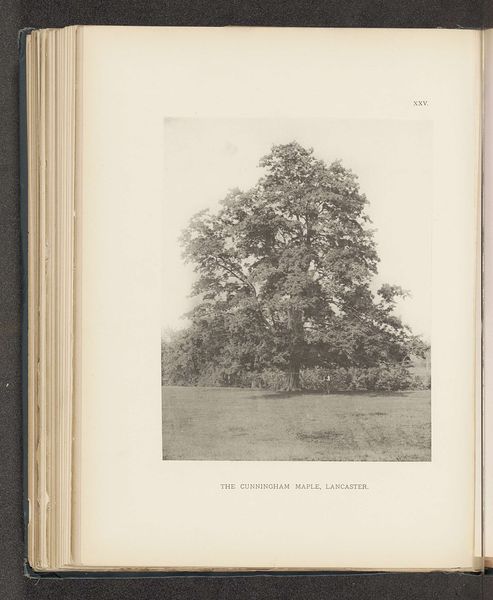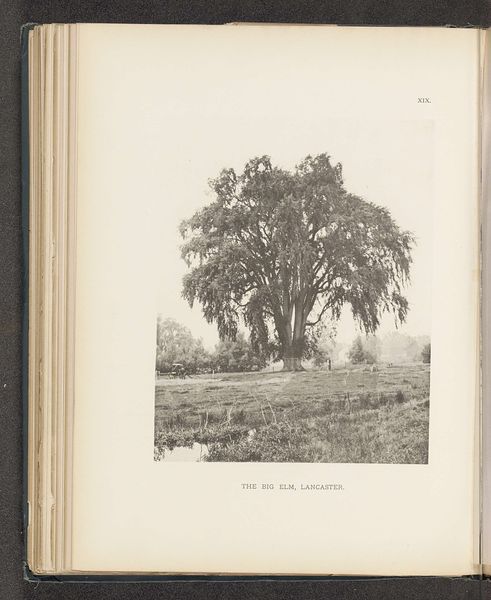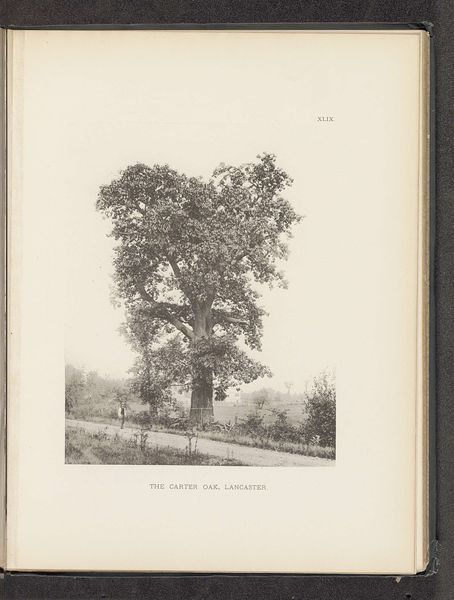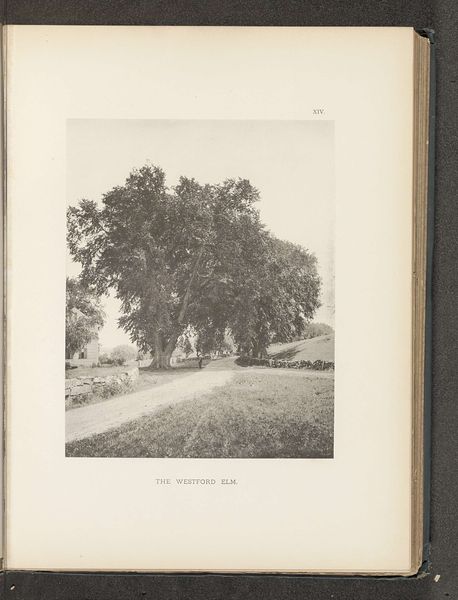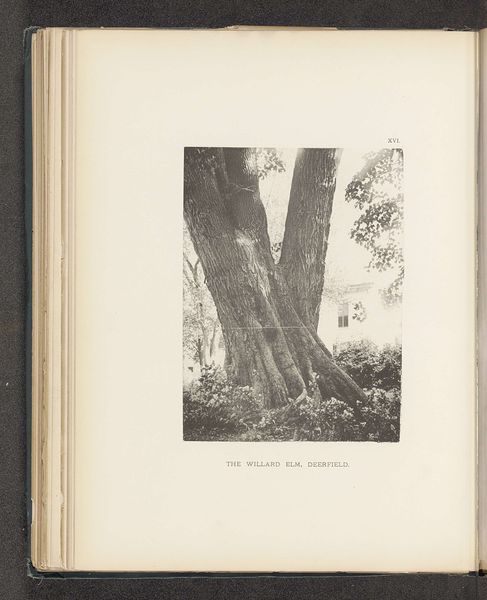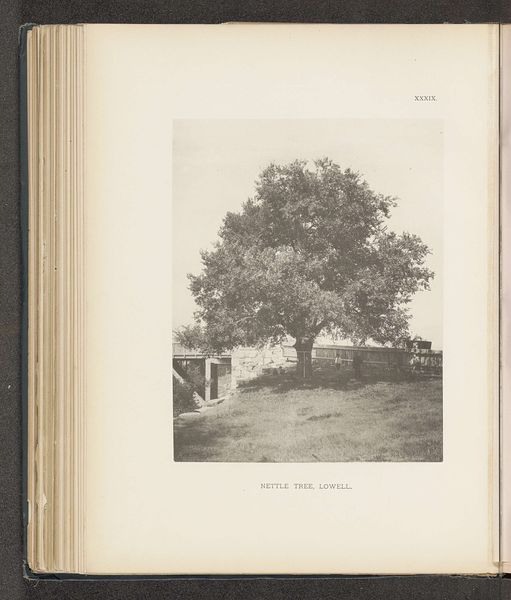
print, photography
#
pictorialism
# print
#
landscape
#
photography
Dimensions: height 222 mm, width 177 mm
Copyright: Rijks Museum: Open Domain
Curator: Here we have a captivating photographic print entitled "The Big Elm, Lancaster," attributed to Henry Brooks, dating to before 1890. Editor: My first impression is one of solitude. The bare tree dominating the landscape, its starkness amplified by the misty atmosphere... It feels almost melancholic. Curator: Indeed. Brooks was working during the rise of Pictorialism, a movement which advocated for photography as an art form equivalent to painting and drawing, often using soft focus and manipulated printing techniques to achieve painterly effects. The elm might symbolize the enduring presence of nature amid industrial progress. Editor: That connects well to the print medium itself. Photography offered the tantalizing promise of reproducible images, but printing, especially in pictorialism, demands laborious interventions, artisanal skill. We see a tension there between mechanized processes and crafted individuality. What paper and chemistry did he utilize to obtain these subdued hues? It has incredible tonal variation for what is presumably a relatively direct process. Curator: Brooks' approach, embedding this landscape into an established tradition of painting, reflects broader societal concerns of that era. This photograph, distributed as a print, was intended for a specific viewing context, likely circulated within artistic circles familiar with these aesthetic debates, or perhaps more publicly. Editor: How intriguing to consider the communities engaged in this visual consumption! Was this seen as a democratizing tool? Were Brooks' material choices based upon regional availability or financial restrictions that were particular to his geographic locale? Were his distribution chains tied to larger trends in media circulation in urban centres versus rural locations? Curator: All essential considerations, prompting us to further probe the relationship between Brooks’ work, its reception, and the evolving societal landscape surrounding him. It speaks volumes, silently bridging a bygone era to our contemporary awareness. Editor: Precisely. Exploring the print's materiality invites reflection on the societal values and technologies embedded within its making. It pushes us to examine not only what the image represents but how its very construction speaks volumes.
Comments
No comments
Be the first to comment and join the conversation on the ultimate creative platform.
